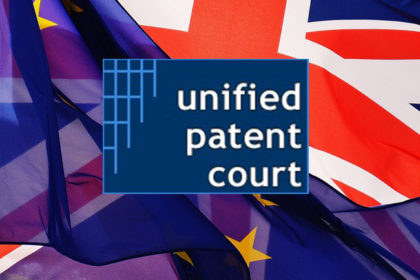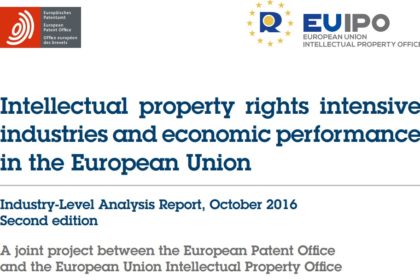Just about one year ago there were several changes in the European Union trade mark system. The most remarkable change was the Name-Change from “Office for Harmonisation in the Internal Market (OHIM)” to “European Union Intellectual Property Office (EUIPO)”, but also that the Community Trade Mark (CTM) is now called “European Union Trade Mark” (EUTM). Some of these changes entered into force in March last year – some enter into force from 1 October 2017 such as the EU certification mark.
Regulation (EU) No 2015/2424 of the European Parliament and the Council amending the Community trade mark regulation (the Amending Regulation) entered into force on 23 March 2016. The Office is now called the European Union Intellectual Property Office (EUIPO) and the Community trade mark will be called the European Union trade mark.
The Amending Regulation was published on 24 December 2015 and is part of the EU trade mark reform legislative package that also includes the replacement of the existing EU Trade Mark Directive (Directive 2008/95/EC of the European Parliament and the Council).
Trade Mark Regulations that enter into force on 1 October 2017
The Amending Regulation contains a number of provisions that will come into force only 21 months after its publication, as they have to be developed by secondary legislation: a Delegated act and an Implementing act.
Broadly speaking, the Delegated act covers procedural rules relating to: oppositions; revocation and invalidity actions; appeals to the Board of Appeal; the organisation of the Boards of Appeal; notifications from the Office and communications with the Office; time limits and suspensions; certain procedures concerning International Registrations.
The Implementing act covers matters such as: the contents of EUTM application; representation of EUTMs; language and translation issues; priority and seniority; transfers and surrenders; EU Collective and Certification marks; certain procedures concerning International Registrations.
The European Commission published draft versions of both acts for public consultation at:
- Draft Implementing Regulation;
- Draft Delegated Regulation.
The Office is committed to informing users about the impact of these changes on its practice in advance of their entry into force. The Guidelines for Examination of the Office will also be updated to reflect Office examination practice in the light of these changes in time for their entry into force.
Graphical representation
- The Amending Regulation removes the graphical representation requirement. This means that, from 01-10-2017, signs can be represented in any appropriate form using generally available technology, as long as the representation is clear, precise, self-contained, easily accessible, intelligible, durable and objective.
- Ahead of the entry into force of this provision of the Amending Regulation, the Office will provide users with information on the alternative media and formats that are considered to comply with the new provision.
EU certification mark
- European Union (EU) certification marks are a new type of trade mark at EU level, although they already exist in some national intellectual property systems.
- Certification marks allow a certifying institution or organisation to permit adherents to the certification system to use the mark as a sign for goods or services complying with the certification requirements.
Other procedural changes
- Provisions for online substantiation of oppositions and cancellations in certain cases from online sources recognised by the Office
- Acquired distinctiveness as a subsidiary claim, allowing the applicant, in practice, to exhaust the right of appeal on inherent distinctiveness before being required to prove acquired distinctiveness
- Codification of EUIPO’s practice (as explained in its Guidelines) on belated evidence of substantiation and proof of use
- A significant simplification of translation requirements
- Assignment of EUTM as a remedy in certain circumstances
- Formal requirements on the structure and format of written evidence in all proceedings (presenting evidence in annexes)
- Hand deliveries and post box deposits will no longer be accepted at the Office
- The EUTMIR and EUTMDR both contain transitional provisions that comprehensively set out when the new procedural rules take effect.
Changes that already entered into force on 23 March 2016

The Amending Regulation brought about a number of changes in the areas of examination proceedings, absolute grounds of refusal, relative grounds of refusal, goods and services, opposition and cancellation proceedings and appeals.
In the area of examination proceedings, the main changes are the following:
- The Amending Regulation eliminates the possibility of filing EU trade mark applications through national offices.
- Users can choose whether they want to receive EU search reports and surveillance letters.
- The Amending Regulation clarifies the impact of the revocation of an earlier mark on which a seniority claim is based, which will now depend on the date of effect of the revocation.
- The Amending Regulation introduces in the text of the Regulation the current practice as regards the time period for submitting third-party observations. This should take place before the end of the opposition period or, where an opposition against the trade mark has been filed, before the final decision on the opposition is taken.
- The Amending Regulation also expressly states the Office’s right to re-open the examination of absolute grounds on its own initiative at any time before registration.
In the area of absolute grounds of refusal the main changes are the following:
- Functional signs (e.g. colour or sound) are now subject to the same prohibitions applied to shape marks.
- The Amending Regulation clarifies the prohibitions related to Protected Designations of Origin (PDO), Protected Geographical Indications (PGI) and other intellectual property titles.
- The possibility of making a declaration disclaiming exclusive rights to non-distinctive elements of trade marks in order to avoid doubts as to the scope of protection has been eliminated.
- The Amending Regulation codifies the current practice as regards invalidity proceedings based on absolute grounds, limiting its examination to the arguments and the grounds provided by the parties.
As regards opposition and cancellation proceedings, the main changes are the following:
- Changes to the start date for the opposition period against international registrations designating the EU. This period will now start one month after the date of publication.
- The Amending Regulation introduces some changes as regards counterclaims before EU trade mark courts. In this respect, EU trade mark courts will not proceed with the examination of counterclaims until either the interested party or the court have informed the Office of the date on which the counterclaim was filed.
- The Amending Regulation imposes on the Office the obligation to inform the EU trade mark court in question of any previous application for revocation or for a declaration of invalidity filed before the Office.
In the area of relative grounds of refusal the main changes are the following:
- Introduction of a separate specific ground of opposition and cancellation on the basis of Protected Designations of Origin (PDO) and Protected Geographical Indications (PGI).
- Changes in one of the dates for determining the obligation to submit proof of use and determining the relevant period. The relevant date will now be the date of filing or priority date of the contested EU trade mark application rather than the date of its publication.
- A series of clarifications in line with existing practice and case law.
The main changes brought about by the Amending Regulation as regards appeal proceedings are the following:
- Elimination of interlocutory revision in inter partes cases, which should result in a shorter overall duration of appeal proceedings in these cases. This is in line with the aim of streamlining proceedings before the Office and taking into account that interlocutory revision of first-instance decisions in inter partes cases was possible only in very exceptional instances (since it required the agreement of both parties).
- Insertion of certain provisions to clarify and codify existing practice regarding ancillary appeals and the date of effect of Board of Appeal decisions. These decisions take effect once the period to bring an action against them has expired or, if an action has been brought within that period, once it has been dismissed by the General Court or, in the case of further appeal, by the Court of Justice.
Source:
Text + Pictures: Press Release EUIPO





